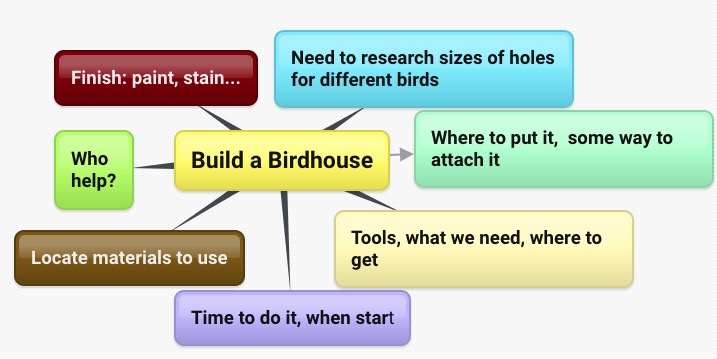Introduction
Decomposition is the first stage of computational thinking. You may have heard the word in reference to something dying or rotting. When something decomposes it does break down into something different.
In the case of computational thinking, decomposition is breaking a complex problem into smaller chunks. The problem can be as small as learning to tie your shoes or as large as constructing a new car that drives itself!
In this Quest, you are going to learn how to break a complex problem into smaller chunks.
I Can Statement
- take a complex problem and break it into smaller chunks
Key Vocabulary
Compare: To put things together to see how they are the same.
Complex problem: Questions or issues that cannot be answered through simple logical procedures.
Contrast: The difference between things.
Decomposition: To break down a complex problem or system into smaller, more manageable parts.
Play the Vocabulary Game below to practice the Key Vocabulary.
Vocabulary Game
You can change the Quiz mode to Match, Test, Learn, Flash Cards, Spell using the selection list at the bottom right of the activity that says "Choose a Study Mode." Direct Link
Steps
1. Watch as a class the video Computational Thinking: Decomposition. You will watch the first 6:25 of the video.
2. As you can see in the video, there are complex problems that you are solving every day.
3. With a partner you are going to do decompose and break down the tasks it will take to make homemade slime. (e.g., what is needed, what has to be purchased, costs, who is going to make it, etc.) You are not creating steps at this point on how to make it. You are looking at the big picture and what is needed to break it down into tasks.
- Your teacher may assign a different complex problem.
4. Use this Slime Decomposition Assignment Document to complete the assignment. You are going to break down the tasks into chunks so that someone reading it will know what is needed to solve the complex problem.
Here's an example about Building a Birdhouse

5. Once you have completed this assignment, as a class you will share out how you broke down the complex problem assigned to you and your partner.
- If the teacher assigns the whole class the same problem, compare and contrast as a group the decomposition.
6. Now using the Computational Thinking Document that you made a copy of in Quest One, break down your own complex problem into chunks.
Completing This Quest
To complete this Quest turn in your decomposition activity to your teacher (via Google Drive, OneDrive, etc.). Then complete the steps for your complex problem and share with your teacher when it is completed.
Check off this Quest on the 21t4s roadmap
I have completed this Quest and I am ready to learn about Quest 3
Competencies & Standards
MITECS Michigan Integrated Technology Competencies for Students, and
5. Computational Thinker
c. Students break problems into component parts, extract key information, and develop descriptive models to understand complex systems or facilitate problem-solving
6. Creative Communicator
d. Publish or present content that customizes the message and medium for their intended audiences
Websites and Documents
Websites
Videos from Outside Sources
21t4s Videos
21t4s Documents & Quizzes




